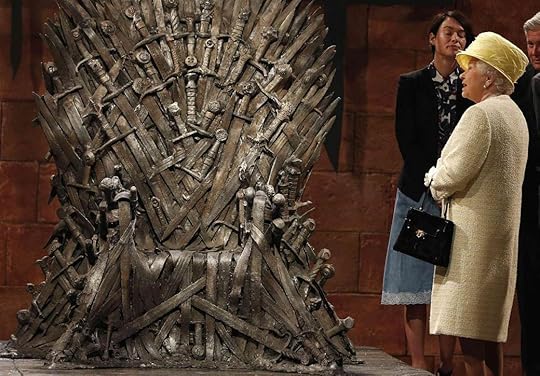David A. Riley's Blog, page 87
July 22, 2014
The Pan Book of Horror Scrapbook to go ahead
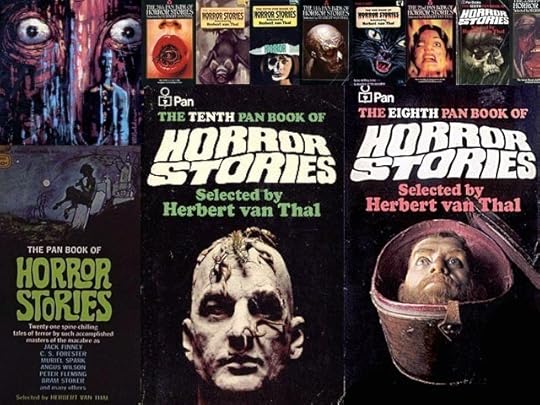
The great news is that Johnny Mains' kickstarter campaign to raise £5,000 to publish the Pan Book of Horror Scrapbook has succeeded. At the moment the actual amount pledged stands at £5,756.
Published on July 22, 2014 01:30
July 21, 2014
Great Review for The Return on Hellnotes
There was a great review for my horror novel The Return on Hellnotes.
The Return
David A. Riley
Blood Bound Books (November, 2013)
ISBN 978-1940250052
$12.99 PB; $2.99 Kindle
272 pp
Reviewed by David T. Wilbanks
Gary Morgan is a tough-as-nails London gangster as well as the lead character in David A. Riley’s novel The Return. After participating in a gangland shooting, with plans to hide out in his long-neglected hometown of Edgebottom, Gary soon discovers that the mill town’s bad reputation hasn’t improved at all over the years; in fact, strange occurrences are on the rise and he finds himself caught in a situation that gets more bizarre the longer he hangs around. So, with full intentions of leaving town and lying low somewhere less threatening, he instead finds himself slipping further and further toward the dreary town’s evil heart.
The creepy artwork by Andrej Bartulovic on the book’s cover broadcasts where this one is heading. Anyone with a craving for bleak crime fiction crossed with the Lovecraftian/occult should enjoy this well-crafted work of looming darkness. Compellingly, the novel follows Gary and the local police as they experience what turns out to be otherworldly mayhem. Pure malevolence, revealed slowly with hair-raising detail, will keep horror fans riveted as they turn pages toward the chilling and merciless conclusion. Celebrated British author David A. Riley has been in the business of writing horror, fantasy and science fiction for several decades now and this storytelling experience is reflected in his work. The Return is a grim, bloody book set firmly in the UK horror tradition, and will make a fine addition to any collection.
The Return
David A. Riley
Blood Bound Books (November, 2013)
ISBN 978-1940250052
$12.99 PB; $2.99 Kindle
272 pp
Reviewed by David T. Wilbanks
Gary Morgan is a tough-as-nails London gangster as well as the lead character in David A. Riley’s novel The Return. After participating in a gangland shooting, with plans to hide out in his long-neglected hometown of Edgebottom, Gary soon discovers that the mill town’s bad reputation hasn’t improved at all over the years; in fact, strange occurrences are on the rise and he finds himself caught in a situation that gets more bizarre the longer he hangs around. So, with full intentions of leaving town and lying low somewhere less threatening, he instead finds himself slipping further and further toward the dreary town’s evil heart.
The creepy artwork by Andrej Bartulovic on the book’s cover broadcasts where this one is heading. Anyone with a craving for bleak crime fiction crossed with the Lovecraftian/occult should enjoy this well-crafted work of looming darkness. Compellingly, the novel follows Gary and the local police as they experience what turns out to be otherworldly mayhem. Pure malevolence, revealed slowly with hair-raising detail, will keep horror fans riveted as they turn pages toward the chilling and merciless conclusion. Celebrated British author David A. Riley has been in the business of writing horror, fantasy and science fiction for several decades now and this storytelling experience is reflected in his work. The Return is a grim, bloody book set firmly in the UK horror tradition, and will make a fine addition to any collection.
Published on July 21, 2014 14:17
July 7, 2014
Tales to Terrify - His Pale Blue Eyes
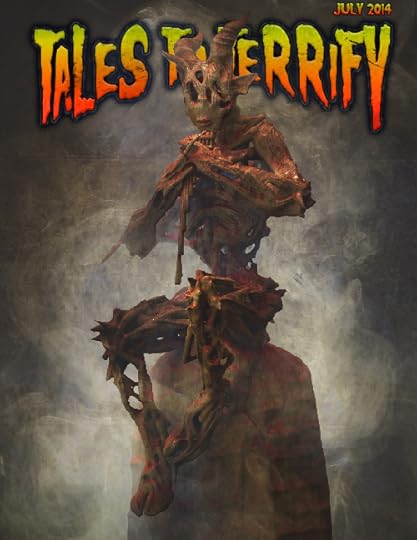 Pleased to see that my short story, His Pale Blue Eyes, is in
Tales to Terrify No 130
, narrated by Antoinette Bergin. This story was first published in Bite Sized Horror, edited by Johnny Mains for Obverse Books in 2011 and is also in my collection
The Lurkers in the Abyss and Other Tales of Terror
.
Pleased to see that my short story, His Pale Blue Eyes, is in
Tales to Terrify No 130
, narrated by Antoinette Bergin. This story was first published in Bite Sized Horror, edited by Johnny Mains for Obverse Books in 2011 and is also in my collection
The Lurkers in the Abyss and Other Tales of Terror
.
Published on July 07, 2014 03:28
Stop the Train
My daughter, Cassandra is appearing in a new musical, premiering in Clitheroe this August.
For those who want to find out more, visit www.stopthetrainmusical.com - suitable for audiences aged 15 years plus due to mature themes and occasional language.
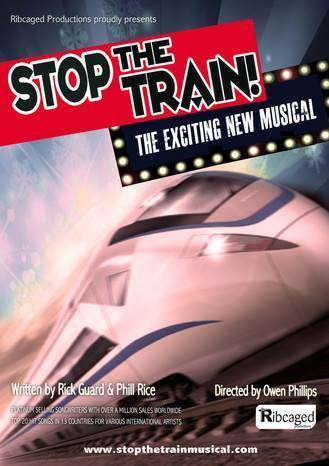
For those who want to find out more, visit www.stopthetrainmusical.com - suitable for audiences aged 15 years plus due to mature themes and occasional language.

Published on July 07, 2014 02:53
July 1, 2014
Pan Book of Horror Stories Scrapbook - Kickstarter Campaign
 Johnny Mains has started a kickstarter campaign to raise funds to publish a lavish, in-depth scrapbook on the Pan Book of Horror Stories. So far, with 55 backers, he has pledges totalling £2,584. The target is £5,000 and there are another 19 days to go. Whether this figure will be achieved is anyone's guess at the moment, but it is within reach.
Johnny Mains has started a kickstarter campaign to raise funds to publish a lavish, in-depth scrapbook on the Pan Book of Horror Stories. So far, with 55 backers, he has pledges totalling £2,584. The target is £5,000 and there are another 19 days to go. Whether this figure will be achieved is anyone's guess at the moment, but it is within reach.I must admit to a bit of a vested interest in this as I was in the Eleventh Pan Book of Horror Stories with my first ever professionally published story, The Lurkers in the Abyss , which went on to be chosen by John Pelan for his two-part anthology, The Century's Best Horror Fiction (Cemetery Dance, 2012). It is also the title story for my collection from Shadow Publishing, The Lurkers in the Abyss and Other Tales of Terror (2013).
If you are interested in this scrapbook being published, just click on this link. Full details are there.
COPIED FROM THE SITE:
"A complete history of The Pan Book of Horror Stories, the infamous anthology series which ran from 1959-1989.THE PAN BOOK OF HORROR STORIES SCRAPBOOK will be the result of 5 years in-depth research into this series which has haunted and thrilled me since I was thirteen years old.
 Original 60s bookmark
Original 60s bookmarkThe funds collected for this book will be put towards the following things:
There is still some more research needed and people to interview
Getting a high quality artists to do the book cover and illustrations.
Paying for a professional proof reader.
High-res scanning of artwork, photos, letters etc.
Printing of the actual books which will be to the highest standards available.
The cult of the Pan Horrors continues to fascinate, more than 55 years after they were first published and 25 years after the last volume hit the shelves. This book aims to publish the definitive history of the series, its editors, its authors - with as much information and paperwork that I've been able to gather together since 2009.
I've still got a lot of work to do on it, so have given myself the publication date of December 2015. It's a bit of a wait, but I'm working on this on my own, and have a full time job plus editing the Best British Horror series for Salt Publishing.
I'm the only person I know of bonkers enough to attempt a book such as this, and the main reason I want to do it is so I can be the first person to read it!
This will be a book for any fan of horror, its authors, the history of publishing, social history in a wider context and how a gentleman called Herbert van Thal created a series of books which has been ingrained into the national psyche."
Published on July 01, 2014 03:30
June 30, 2014
Cover artwork for Black Ceremonies
We now have the final artwork for Charles Black's story collection Black Ceremonies, courtesy of the artist Paul Mudie. This will be published by Parallel Universe Publications later this year as a trade paperback.
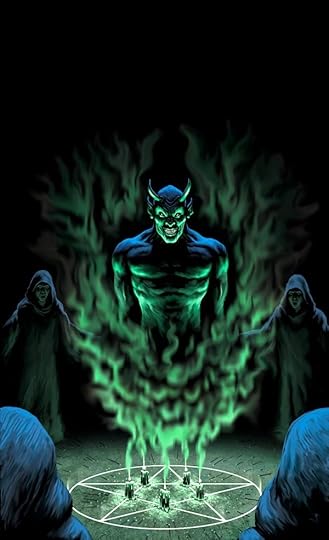 Cover artwork by Paul Mudie
Cover artwork by Paul Mudie
 Cover artwork by Paul Mudie
Cover artwork by Paul Mudie
Published on June 30, 2014 04:02
High School Musical
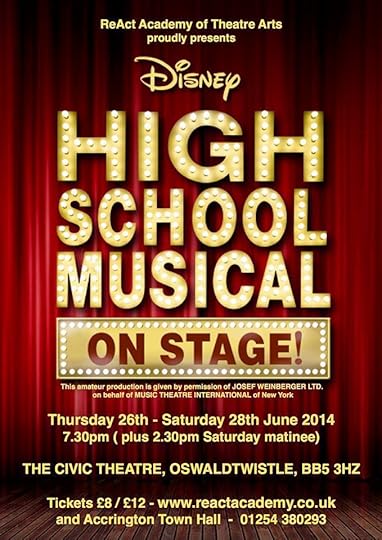 It's been a busy weekend, starting Thursday night. My daughter's drama school, ReAct, were performing High School Musical at Oswaldtwistle Civic Theatre Thursday night, Friday night, Saturday afternoon and evening. Lin and I were working front of house on each of these performances, Lin selling programs while I handled the raffle. We also watched every performance. It says something about the standard of the kids on stage that we enjoyed them all, especially the final night. They were tremendous. Some great singing, brilliant performances and an unbelievable amount of energy!
It's been a busy weekend, starting Thursday night. My daughter's drama school, ReAct, were performing High School Musical at Oswaldtwistle Civic Theatre Thursday night, Friday night, Saturday afternoon and evening. Lin and I were working front of house on each of these performances, Lin selling programs while I handled the raffle. We also watched every performance. It says something about the standard of the kids on stage that we enjoyed them all, especially the final night. They were tremendous. Some great singing, brilliant performances and an unbelievable amount of energy!Sunday was our daughter, Cassandra's 30th birthday, which we celebrated with a family meal out at the Red Lion in Blackburn.
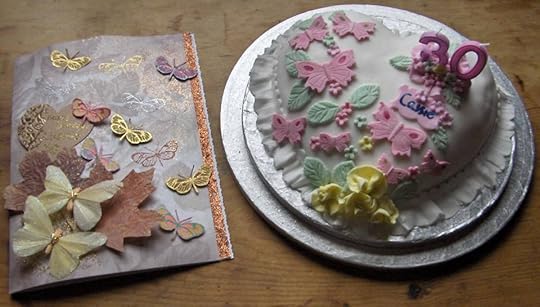 The birthday card and cake that my wife Linden made
The birthday card and cake that my wife Linden made
Published on June 30, 2014 02:39
June 29, 2014
First stories accepted for Kitchen Sink Gothic
We have already accepted three stories for our forthcoming anthology
Kitchen Sink Gothic
due to be published by Parallel Universe Publications next year.
SUBMISSIONS
Parallel Universe Publications is now accepting submissions, either original or reprints, for an anthology of stories inspired by the classic British cinema/theatre phenomenon known as kitchen sink drama.
What Culture described it as: "A determination to examine the lives of the working and dispossessed classes in a non sentimental way...The movement began in the late 1950s and has survived to this day with the oeuvre of Ken Loach and films such as Nil By Mouth. Tackling thorny themes is a trademark of the Kitchen Sink drama. Abortion, divorce, homelessness, single motherhood, inter racial sex, poverty and homosexuality were all ripe topics to be examined. There was also the advent of The Angry Young Man – usually working class men railing against everyone and everything."
That fount of all knowledge, Wikipedia, describes it as: "a term coined to describe a British cultural movement that developed in the late 1950s and early 1960s in theatre, art, novels, film and television plays, whose 'heroes' usually could be described as angry young men. It used a style of social realism, which often depicted the domestic situations of working-class Britons living in cramped rented accommodation and spending their off-hours drinking in grimy pubs, to explore social issues and political controversies.
The films, plays and novels employing this style are set frequently in poorer industrial areas in the North of England, and use the rough-hewn speaking accents and slang heard in those regions. The film It Always Rains on Sunday (1947) is a precursor of the genre, and the John Osborne play Look Back in Anger (1956) is thought of as the first of the idiom.
The gritty love-triangle of Look Back in Anger, for example, takes place in a cramped, one-room flat in the English Midlands. The conventions of the genre have continued into the 2000s, finding expression in such television shows as Coronation Street and EastEnders .[1]
In art, "Kitchen Sink School" was a term used by critic David Sylvester to describe painters who depicted social realist-type scenes of domestic life.[2]"
We look forward to tales of darkness and horror, of the supernatural and the weird within the overall framework of the social realism of the kitchen sink drama.
Please send your submissions to rileybooks@ntlworld.com headed "Kitchen Sink Gothic" as an attachment in either doc or docx. We welcome either new stories or reprints. If a reprint please add details of previous publication. We have no firm maximum length though obviously the longer the story the better it will need to be to be accepted.
Payment will be £5 per thousand words and a contributor's copy of the book.
SUBMISSIONS
Parallel Universe Publications is now accepting submissions, either original or reprints, for an anthology of stories inspired by the classic British cinema/theatre phenomenon known as kitchen sink drama.
What Culture described it as: "A determination to examine the lives of the working and dispossessed classes in a non sentimental way...The movement began in the late 1950s and has survived to this day with the oeuvre of Ken Loach and films such as Nil By Mouth. Tackling thorny themes is a trademark of the Kitchen Sink drama. Abortion, divorce, homelessness, single motherhood, inter racial sex, poverty and homosexuality were all ripe topics to be examined. There was also the advent of The Angry Young Man – usually working class men railing against everyone and everything."
That fount of all knowledge, Wikipedia, describes it as: "a term coined to describe a British cultural movement that developed in the late 1950s and early 1960s in theatre, art, novels, film and television plays, whose 'heroes' usually could be described as angry young men. It used a style of social realism, which often depicted the domestic situations of working-class Britons living in cramped rented accommodation and spending their off-hours drinking in grimy pubs, to explore social issues and political controversies.
The films, plays and novels employing this style are set frequently in poorer industrial areas in the North of England, and use the rough-hewn speaking accents and slang heard in those regions. The film It Always Rains on Sunday (1947) is a precursor of the genre, and the John Osborne play Look Back in Anger (1956) is thought of as the first of the idiom.
The gritty love-triangle of Look Back in Anger, for example, takes place in a cramped, one-room flat in the English Midlands. The conventions of the genre have continued into the 2000s, finding expression in such television shows as Coronation Street and EastEnders .[1]
In art, "Kitchen Sink School" was a term used by critic David Sylvester to describe painters who depicted social realist-type scenes of domestic life.[2]"
We look forward to tales of darkness and horror, of the supernatural and the weird within the overall framework of the social realism of the kitchen sink drama.
Please send your submissions to rileybooks@ntlworld.com headed "Kitchen Sink Gothic" as an attachment in either doc or docx. We welcome either new stories or reprints. If a reprint please add details of previous publication. We have no firm maximum length though obviously the longer the story the better it will need to be to be accepted.
Payment will be £5 per thousand words and a contributor's copy of the book.
Published on June 29, 2014 02:36
June 26, 2014
Parallel Universe Publications has a Facebook Page
We now have a dedicated Facebook page for Parallel Universe publications. Check it out on www.facebook.com/paralleluniversepublications.
We are already starting to receive submissions for our Kitchen Sink Gothic anthology. Details about submissions are here.
We are already starting to receive submissions for our Kitchen Sink Gothic anthology. Details about submissions are here.
Published on June 26, 2014 01:38
June 24, 2014
The Queen and the Iron Throne
Published on June 24, 2014 06:31

